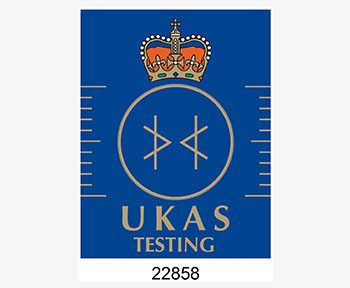Think of the herpes simplex virus infection, and you may get a dramatic recall of the images of the condition from your high school health class. But what if we were to tell you that this usual sexually transmitted disease (STD Profile Exams) doesn’t look or appear a specific way every time? Most people with the disease don’t go through any signs and may not even think they have been suffering from the disease. So, going for a Herpes Test would be a good idea.
Nearly one out of every six people between the ages of 14-49 undergoes genital HSV infection. Assessments predict that almost 80% of those people go through little to no signs when symptoms arise. But, they can sometimes be unfounded for other conditions, including:
- Chlamydia
- Trichomoniasis
- Syphilis
Can Herpes Testing be confused with something Else?
Pain, itching, and general soreness are common indications of genital infection. Still, it may go without saying that they can also indicate several other conditions and common STDs.
If your symptoms suggest a hidden herpes infection, examining yourself with a doctor or an at-home lab test is essential. It’s also notable to realize what else could lead to these symptoms.
Chlamydia
Like Herpes, most people who suffer from Chlamydia don’t see any signs and need a Rapid Chlamydia Test on next-day delivery. When they do come off, they usually show around 1-3 weeks after disclosure, or sometimes even a few months.
Symptoms, for instance, burning and itching around the genital area, are expected in those with Chlamydia. Still, other symptoms discriminate this typical infection, such as unusual discharge and pain when urinating.
Trichomoniasis
Retaining in theme with Herpes and Chlamydia, the Trichomoniasis Testing is famous for showing very few signs. Indeed, the CDC claims that about 70% of people with the infection go through no symptoms. If symptoms do take place, they usually come around 5-28 days after illness but can sometimes enhance much later.
Itching, burning, redness, and general soreness of the genitals are typical signs of Trichomoniasis. This condition can also be confused with HSV infection.
Syphilis
Syphilis can transfer through sexual contact and have severe complications if left without a diagnosis. It is best to get a Syphilis Test result. The signs and symptoms of the infection differ by stage. Still, during the very first stage, it’s normal to observe a single sore or numerous sores in the area where the disease accessed the body – this can be in and around the genitals, anus, rectum, or mouth.
Although we can cure this sore without treatment, getting the perfect antidote as soon as possible is critical to stop the infection from developing into the next stage.
Can something mimic or look like Herpes Blister testing?
Genital infection is depicted by itchy, small red bumps or tiny white blisters, generally appearing a few weeks after the infection. As the outburst ends, the skin will form layers as the ulcers heal. These painful bumps connected with HSV can sometimes be inaccurate for other non-sexual infections.
Doubtful whether your bumps are indications of HSV or not? Some other typical signs of genital HSV infection to look out for comprise:
- Pain or itching in the genital area
- Ulcers
- Layers
- Swollen lymph nodes
- Headaches
- Muscle ache
- Fever
If you are concerned about your signs and desire to know more, you must connect with your doctor.
Is Misdiagnosis Common in Herpes Monitoring?
Although the signs and symptoms of this infection may sometimes appear alike, several other conditions can be incorrect for the virus, making accurate screening important for detecting and spotting Herpes. Alas! A visual examination without perfect testing can result in misdiagnosis, and even if the diagnosis is correct – the kind of infection can’t be rooted through a visual exam alone. So, screening is mandatory if you ever go through any symptoms.
While HSV-2 commonly leads to most genital infections, HSV-1 causes cold sores or fever blisters. With cases leading to type-1 typically going through fewer outbursts. Moreover, those leading type 2 experience constant or frequent outbreaks. Awareness of this and the virus type makes it much simpler to perceive what to expect and consider the best treatment options.
How common are false positives in Herpes Home Screening?
False-positive reports express an exam result that says a person has an assured condition or disease when, in actual reality, they don’t. This can occur with various diagnostic screening and herpes monitoring; other sexual health exams are no exception.
It’s undoubtedly important to keep away false-positive results for permanent infections, for example, HSV infection, which is why using high-quality monitoring kits and trustworthy accredited laboratories is essential to prevent any confusion or false effects.
One of the finest ways to lessen your risk of STD PCR Results reveals infection is rising with daily screening. STD Profile Products are necessary to perform regularly. This can be done by taking a troll to your doctor’s chamber or from the comfort zone of your own home with an at-home lab screening.
While some of the most common STDs, for example, Chlamydia and gonorrhoea, are treatable with the correct therapies, the situation is a bit different when it comes to the simplex virus, better termed Herpes. That’s correct; although treatments are accessible to help reduce and sometimes even stop the outbreaks, there is no cure for the virus. The STD Home Checkup is significant to keep yourself healthy.
Increased Risks of other STI home Tests
Genital Herpes can elevate a person’s threat of contracting and transfer to other common sexual infections. Visible sores can lead to small skin breaks, making it easier for specific viruses to affect the body. It’s essential to note that the virus doesn’t need to be noticeable to expanse – even when no sores are present, it is all the more active in the body.










